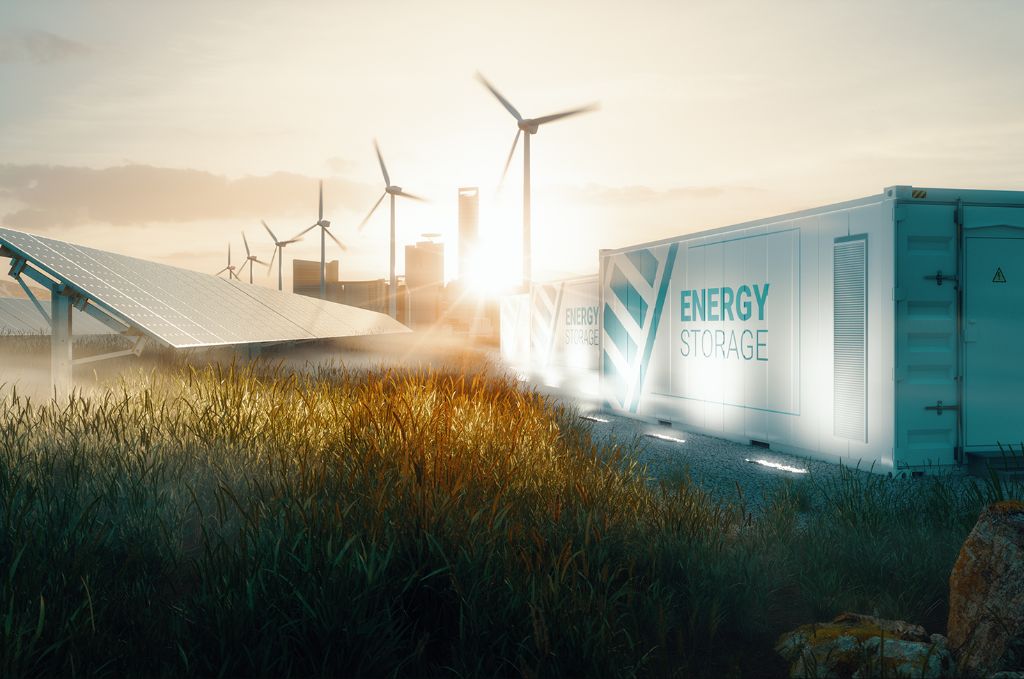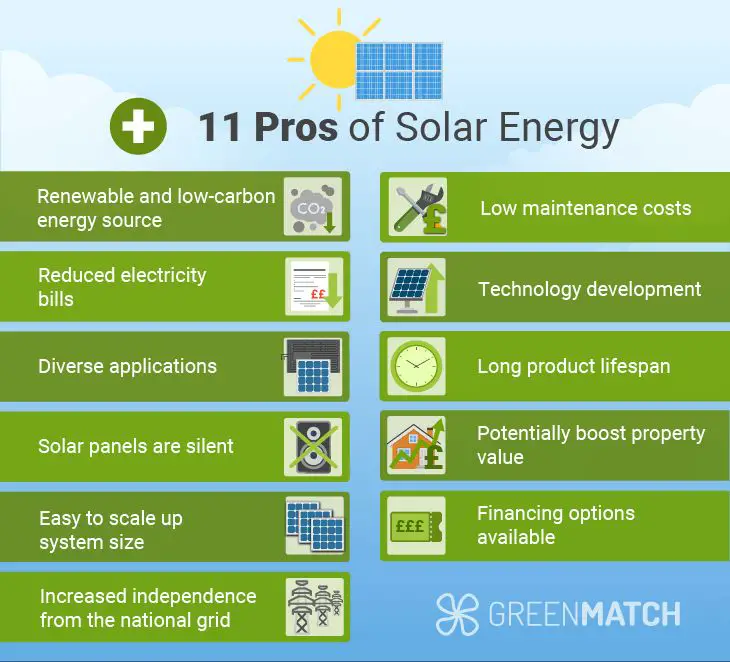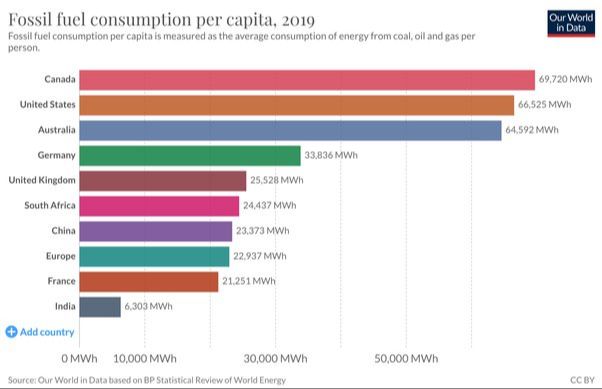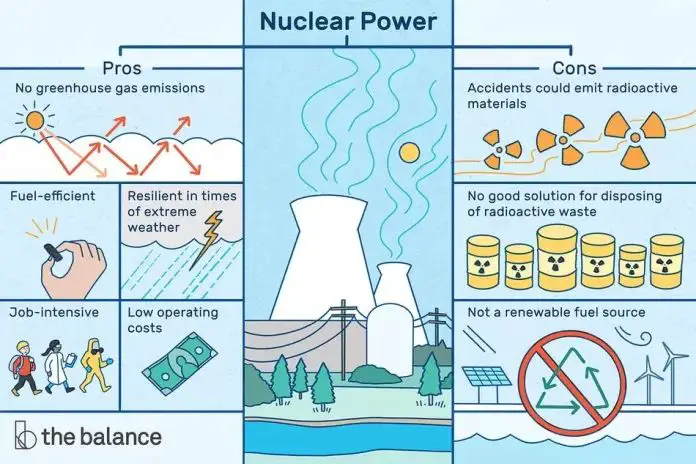Why Shouldn’T We Use Renewable Energy?
The High Upfront Costs of Renewable Energy

One of the main challenges with transitioning to renewable energy sources like solar, wind, and geothermal is the high upfront costs required. Building large-scale solar farms, wind turbines, or geothermal plants requires major capital investments before any energy can be generated. According to Inspire Clean Energy, the average upfront cost per kWh of solar power ranges from $2,000-4,000, while comparable costs for fossil fuels generally range from $1,000-$1,500 per kWh [1]. However, over the lifetime of a renewable energy system, the “fuel” costs are minimal or zero. Whereas fossil fuels require ongoing expenditures for supply and delivery.
Bloomberg reports that due to supply chain issues and raw material costs, the price of renewable energy infrastructure is increasing [2]. This challenges the notion that renewables are always cheaper long-term. The large upfront investment for renewable power plants, solar farms, wind turbines etc. is a barrier, especially when traditional energy from fossil fuels is still relatively inexpensive. However, as technology improves and supply chains stabilize, the upfront costs of renewable energy are expected to decrease.
Overall, while renewable energy requires significant initial capital, the long-term benefits of zero fuel costs and no emissions may justify the investment. But the high upfront costs pose a challenge, especially for developing nations that do not have access to low-cost financing. Government incentives and private investments can help bridge the gap and allow more widespread adoption of renewable power.
Intermittency and Storage Issues
One of the main challenges of renewable energy sources like solar and wind is their intermittent nature. The sun doesn’t always shine, and the wind doesn’t always blow when energy is needed. This creates a need for energy storage and backup power sources to maintain reliability of supply.
According to Scientific American, the output of solar and wind farms can change rapidly over periods of seconds, minutes, or hours due to passing clouds or changing weather patterns (Source). These fluctuations in renewable generation make balancing supply and demand more complex.
To overcome the intermittency issues, storage solutions like batteries and pumped hydro can store excess renewable energy for use when the sun isn’t shining or wind isn’t blowing. However, large-scale, cost-effective storage is still a challenge. Recent advances in battery technology, like lithium-ion batteries, show promise for supporting higher renewable energy penetration.
Backup power sources like natural gas or hydropower plants that can quickly ramp production up or down are also needed to fill gaps when renewable output drops. But these backup power plants reduce the environmental benefits of renewable energy.
Land Use and Raw Materials Required
A common concern about renewable energy is the significant amount of land required for projects like wind and solar farms compared to traditional fossil fuel power plants. According to the Brookings Institute, wind and solar generation require approximately 10 times more land area per unit of power generated than coal or natural gas plants. This is attributed to the lower power density and intermittent output of renewables [1].
However, analyses by groups like Frontier Group have found that transitioning to 100% renewable energy in the U.S. would only require about 0.5% of total land area for generation infrastructure based on current technologies. This is comparable to the 0.6% of land used for current fossil fuel extraction, processing, and distribution [2]. While renewable projects are land-intensive, the actual footprint is relatively small compared to total available land.
There are also significant land use and environmental impacts from mining and drilling for fossil fuels that often get overlooked in comparisons. Coal mining in Appalachia, oil drilling on public lands, and natural gas fracking have their own land disturbances and ecological consequences.
The raw material requirements for batteries, solar panels, wind turbines, and other renewable energy infrastructure can also seem intensive versus simply burning fossil fuels. But renewables avoid the continual costs of fuel mining, drilling, and transportation needed for fossil fuel power plants over their lifespans.
Difficulty Integrating Renewables into the Grid
One of the key challenges with relying more on renewable energy is integrating it into the existing power grid. Renewable sources like wind and solar produce intermittent power that fluctuates based on weather conditions. This can make matching energy supply with demand more difficult. Upgrading transmission infrastructure is also often needed to transport renewable power from source to end users.
The intermittent nature of renewables poses difficulties for grid operators used to consistent power output from traditional sources. Sudden drops in renewable generation must be quickly compensated by ramping up backup power plants or drawing from energy storage. If the grid is not balanced, blackouts can occur. This requires sophisticated forecasting of renewable generation as well as real-time coordination of supply and demand.
Many existing transmission lines were not built to handle the influx of renewables. Long-distance high voltage lines are often needed to connect optimal wind and solar sites with load centers. However, building new transmission infrastructure is costly and faces siting and permitting challenges. Upgrades to existing lines may also be constrained by right-of-way issues.
Smart grid technology provides a potential solution for better integrating renewables. Smart grids use digital communications, automation, and sophisticated software to optimize grid performance. This allows grid operators to see what’s happening across the system in real-time and reroute power as needed. Smart inverters, grid-scale batteries, and demand response programs also add flexibility. Over time, smart grids can enable much higher renewable penetration.
While integrating renewables poses difficulties, solutions exist to modernize grid infrastructure and operations. With the right investments and policies, power systems can transition to rely more on renewable energy while maintaining reliability.
Job Losses in the Fossil Fuel Industry
The transition to renewable energy will inevitably lead to job losses in the fossil fuel industry. Many communities are highly dependent on jobs in coal mining, oil drilling, and natural gas extraction. According to one source, the petroleum sector shed 31,600 jobs in recent years for the largest total job losses of any industry.
Retraining programs will be critical to help fossil fuel workers transition into new jobs in the renewable energy industry. Fortunately, the clean energy sector is experiencing rapid job growth that can potentially offset losses in fossil fuels. As one analysis found, job gains in renewable energy were so strong in recent years that they effectively masked losses from several fossil fuel industries. The solar industry in particular is creating new jobs at a rapid pace.
With proper policies and retraining programs in place, the short-term job losses in fossil fuels can be more than replaced by the creation of stable, good-paying jobs in renewable energy over the long run. Workers displaced by the energy transition need support, but can also benefit from the new employment opportunities the green economy provides.
Regulations and Subsidies Needed
Renewable energy sources like solar and wind often require government subsidies and incentives to drive adoption because they have higher upfront costs compared to fossil fuels. According to the U.S. Energy Information Administration, nearly half (46%) of federal energy subsidies went to renewable energy in fiscal year 2022, totaling $15.6 billion. This was double the $7.4 billion in subsidies for renewables in 2016.
While subsidies can help make renewable energy more cost-competitive, they also create market distortions. Critics argue that renewable energy would not be viable without government support, indicating it is not yet economically efficient. Subsidies allow renewable energy to undercut and potentially crowd out fossil fuel energy production. Additionally, subsidies must be funded by taxpayers or by increasing government debt.
Governments may also impose additional regulations like carbon pricing mechanisms, emissions standards, and fossil fuel bans to make renewable energy more attractive by comparison. However, these regulations increase costs for fossil fuel producers and consumers. Opponents argue this impacts jobs in the fossil fuel industry and makes energy more expensive overall.
Local Community and Environmental Impacts
Renewable energy projects can sometimes face opposition from local communities concerned about how new wind or solar farms may impact their neighborhoods. Some of the concerns that residents voice include:
- Potential noise and visual impacts from wind turbines or large solar panel installations
- Disruption to local wildlife habitats and natural areas when building renewable energy infrastructure
- Reduced property values for homes located near renewable energy projects
There are ways for renewable energy developers to mitigate these local impacts. Conducting environmental impact assessments and holding town halls with residents early in the planning process can help address concerns. Proper turbine placement and visual screening can reduce noise and viewshed issues. Developers can also contribute to habitat conservation funds or designate protected natural areas nearby to offset disruptions caused by new projects.
While local impacts are real and require careful management, they must be weighed against the broader environmental benefits of transitioning to renewable energy. Well-sited renewable projects with community involvement can provide clean energy while preserving local quality of life.
Developing Nations Rely on Cheap Fossil Fuels
Many developing nations face challenges in transitioning to renewable energy due to the comparatively higher costs compared to fossil fuels. According to a UN report, the additional investment needed for developing countries to transition their energy systems is estimated at $1 trillion per year until 2030, equal to 2.5% of global GDP 1. For the poorest countries, costs are estimated at 20-30% of GDP per year 1. With limited budgets, developing nations often rely on the cheapest energy sources like coal and natural gas to meet rising energy demands.
Fossil fuels have historically been the most cost-effective option for developing nations to scale up electrification. Per kWh costs for renewables remain comparatively higher in most developing regions. For example, solar PV costs $0.068-0.242/kWh in Africa compared to $0.039-0.117/kWh for natural gas 1. Significant investment and aid from developed nations is needed to improve infrastructure and bring down renewable costs in poorer nations.
The transition to clean energy relies on financial and technological assistance from the international community. Developed countries have pledged $100 billion a year from 2020 onward to help developing nations expand renewables and meet climate goals under the Paris Agreement 2. Greater support through concessional loans, grants, and private investment can help scale renewables in developing regions.
Limits of Renewable Energy Adoption
While renewable energy sources like solar and wind are growing rapidly, there are still limits to how much they can realistically contribute to the overall energy mix. Geographic, technical and economic factors constrain renewable energy adoption at scale. According to the International Energy Agency (IEA), “To achieve net-zero emissions by 2050, renewable power capacity additions need to almost double in rate from 2021 to 2026.”1 Even with this accelerated growth, renewables may not be able to meet all of our energy needs.
The sun does not always shine and the wind does not always blow, making solar and wind intermittent resources. The storage technology does not yet exist to overcome intermittency challenges and provide reliable baseload power to the grid using 100% renewables. Nuclear and fossil fuels with carbon capture and sequestration may continue to play an important role in ensuring grid reliability. While renewable energy adoption is crucial to address climate change, its limits mean we likely cannot transition from fossil fuels overnight. A balanced approach is required that realistically accounts for economic, technical and geographic constraints.
Balancing Costs vs. Benefits
Transitioning to renewable energy involves carefully weighing the costs and benefits. While renewables offer environmental benefits, they also come with economic and practical challenges that must be considered.
Studies show that on a full lifecycle basis, renewable energy sources like wind and solar are cost-competitive or even cheaper than fossil fuels when accounting for externalities like healthcare costs from pollution (https://www.mdpi.com/2673-4931/11/1/15). However, the high upfront capital costs of building wind farms and solar installations can deter adoption, even if long-term costs are lower.
Policymakers must consider appropriate timeframes and targets for renewables penetration that balance near-term costs against long-term savings and sustainability goals. Gradual steps like clean energy mandates can help scale adoption in a measured way. According to one analysis, the U.S. could feasibly and affordably achieve 80% renewable electricity by 2030 with the right supporting policies (https://www.linkedin.com/pulse/renewable-energy-vs-traditional-cost-benefit-analysis).
Renewable energy will realistically be part of a diverse energy mix alongside nuclear, natural gas, and potentially cleaner fossil fuel plants using carbon capture. Pursuing a diverse portfolio avoids reliance on any single solution while steadily displacing higher-emission sources. With thoughtful analysis of costs and benefits over both the short and long term, renewable energy can deliver environmental gains without sacrificing affordability or reliability.




